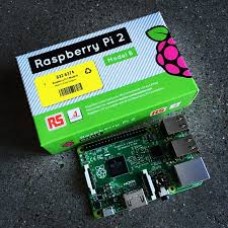Shopping Cart
0 item(s) - USD 0.00- 5W Resistor (6)
- Arduino Development (64)
- Audio (8)
- Batteries (17)
- Cable & Wire (36)
- Capacitors (41)
- Charger (7)
- CNC Machine (4)
- Connector (26)
- Connector (3)
- Connector & Sockets (3)
- Crystals / Oscillators (9)
- DCA Professional Power Tools (0)
- Development Tools/ Programmers (10)
- Digital Oscilloscope (0)
- Display (65)
- Domino (5)
- Driller (16)
- ECOSPARKS PRODUCTS (0)
- Electrical Products (1)
- Ferrit (1)
- GPS Module (5)
- GSM Module (8)
- Headers (15)
- Heat shrinkable tubing (7)
- IC-Driver (17)
- IC-Microcontroller (31)
- IC-OpAm (13)
- IC-Timer (5)
- Inductors SMD (0)
- Inductors/Coils/Chokes (16)
- Integrated Circuits ( ICs ) (1)
- Max Family (7)
- Micro SD (7)
- Module Bluetooth/ Bluetooth (5)
- Module Relays (6)
- MosFet & Fet (15)
- Motor Pump (4)
- Optical Sensor (11)
- Optocouplers (3)
- Other Products (1)
- Over Voltage / Current (11)
- PCB (16)
- Potentiometers / Variable Resist (16)
- Power Supply (16)
- Projects Box (1)
- Raspberry Pi (31)
- Regulators (20)
- Relays (11)
- RePair Battery LapTop (2)
- Resistor-Network (3)
- Resistors (52)
- RF IC, Module (13)
- ROBOTIC (55)
- Semiconductors (0)
- Sensors / Transducer (82)
- Service and Repare (0)
- Smart Home (2)
- Socket-IC (10)
- Solar Panel (4)
- Solder (8)
- Soldering Tool (28)
- Specialized Function IC (10)
- surface mount (SMD) (35)
- Switches, Key Pad (25)
- Terminal block (11)
- Test & Measurement (21)
- Testboard (6)
- Tools & Supplies (57)
- Transistor (32)
- Triac (3)
- USB Connector (10)
- USB to Serial (13)
- WiFi Module (13)
- Wire Termial (15)
- Diodes (20)
- IC-Logic Family (29)
Raspbery Pi B+
Availability: In Stock
Add to Compare
Newer computers and game consoles have replaced the old machines where most of us learned to program. The creators capitalized on the powerful and affordable processors designed for the booming mobile device arena, and they were able to create an economical, programmable computer with attractive graphics that could boot into the programming environment and not break the bank.
The Raspberry Pi is a credit card sized single-board computer with an open-source platform that has a thriving community of its own, similar to that of the Arduino. It can be used in various types of projects from beginners learning how to code to hobbyists designing home automation systems.
There are a few versions of the Raspberry Pi, but the latest version, B+, has improved upon its predecessor in terms of both form and functionality. The Model B+ features:
| • • • • • • |
More GPIO More USB Micro SD Lower power consumption Better audio Neater form factor |
This higher-spec variant increases the GPIO pin count from 26 to 40 pins. There are now four USB 2.0 ports compared to two on the Model B. The SD card slot has been replaced with a more modern push-push type micro SD slot. It consumes slightly less power, provides better audio quality and has a cleaner form factor.
To get started you need a Raspberry Pi Model B+, a 5V USB power supply of at least 2 amps with a micro USB cable, any standard USB keyboard and mouse, an HDMI cable and monitor/TV for display, and a micro SD card with the operating system pre-installed. The NOOBS (New Out Of the Box Software) OS is recommended for beginners, and you may choose one of several from the download page.
This pinout diagram will help you get familiar with the layout of the board and get started in immersing yourself into your own passion projects.

Write a review
Your Name:Your Review: Note: HTML is not translated!
Rating: Bad Good
Enter the code in the box below:
Cambodia Electronic Source © 2024








